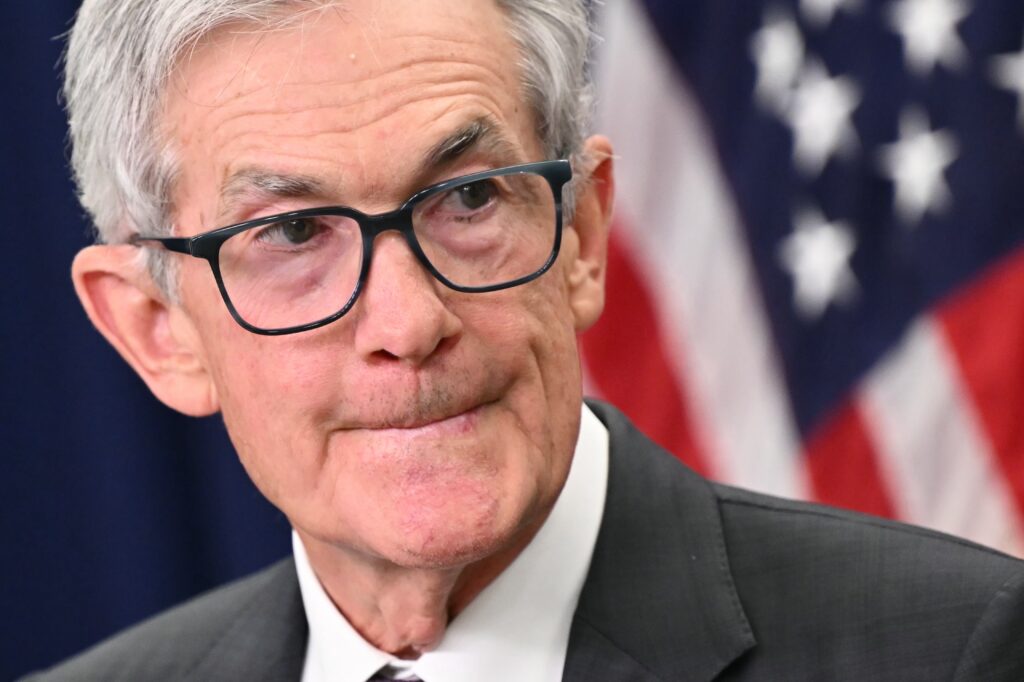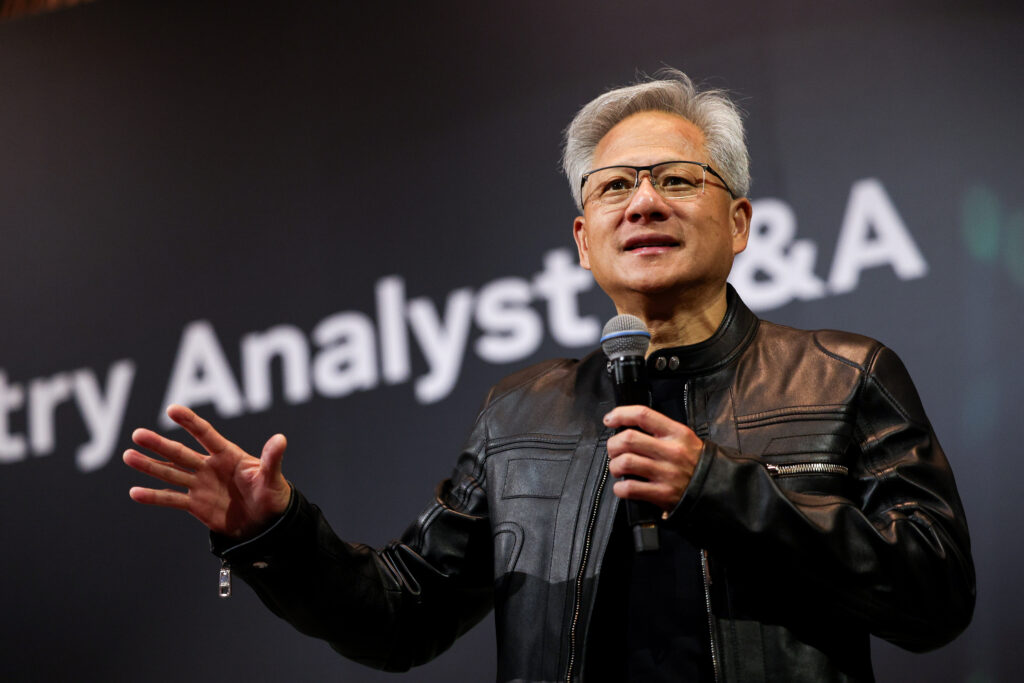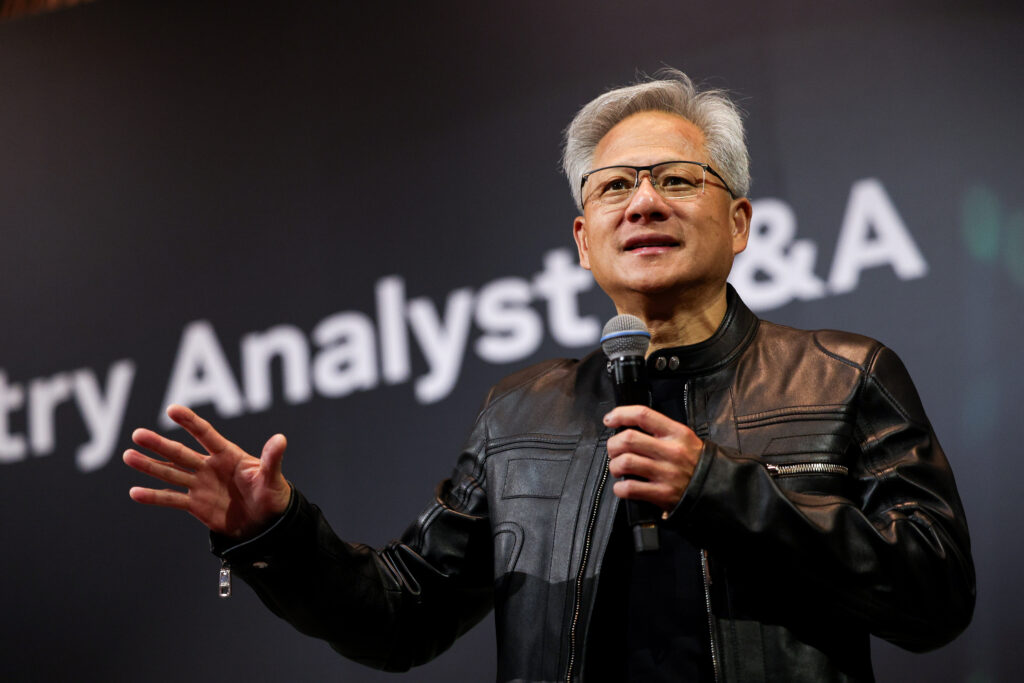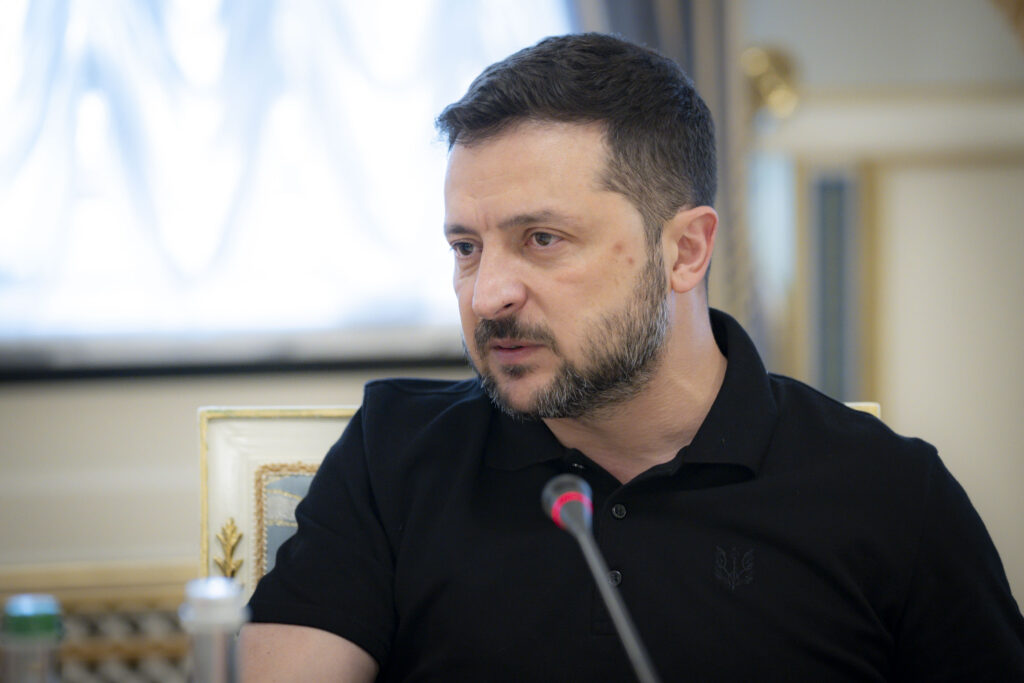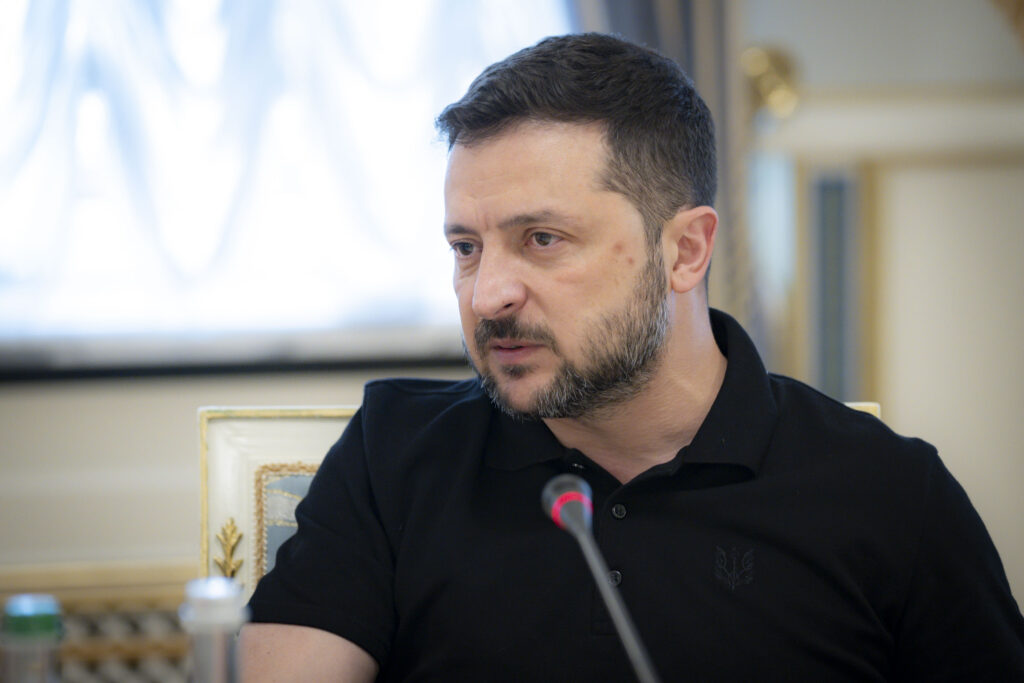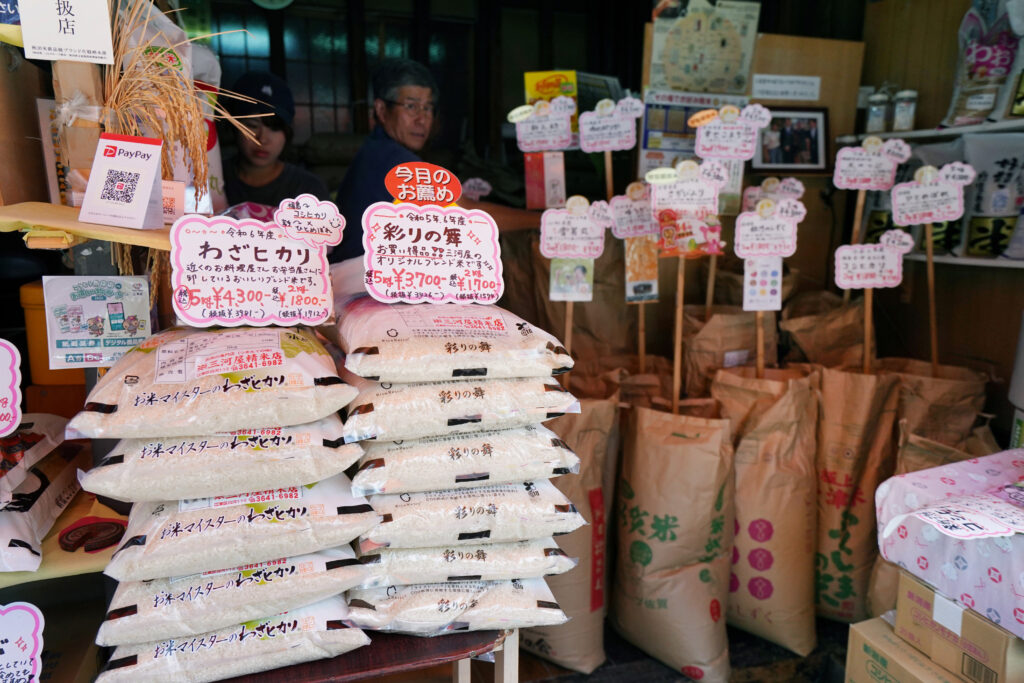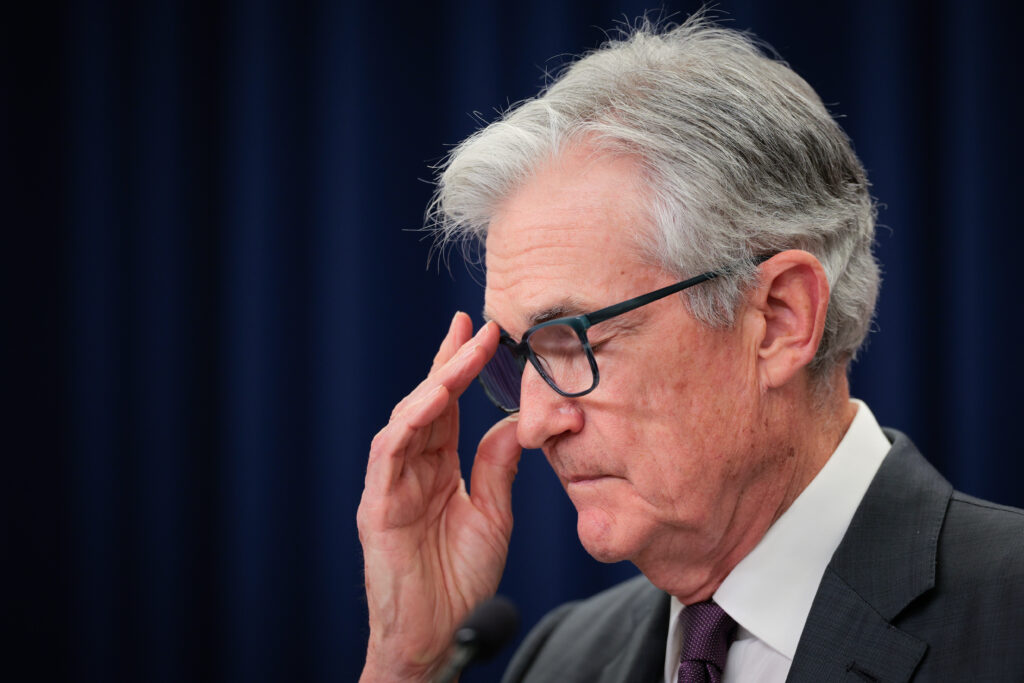Under Trump pressure, US Fed chief to walk tightrope in speech
US Federal Reserve chief Jerome Powell is expected to walk a fine line while delivering a closely watched speech at a central banking conference on Friday, as he faces down attacks from President Donald Trump alongside mixed economic data.The US central bank chair may have used his keynote speech at the Jackson Hole Economic Policy Symposium last year to indicate the time had come for interest rate cuts — but analysts warn there is a murkier picture this time around.”The Fed is in a tough position as inflation remains above target and downside risks to the labor market are intensifying,” said Ryan Sweet, chief US economist at Oxford Economics.Powell is due to deliver his final Jackson Hole speech as Fed chair at 10:00 am Eastern Time (1400 GMT) on Friday. His term at the helm ends in May 2026.”Whether they cut or not in September will likely hinge on data that Powell won’t have in hand” at the symposium, Sweet told AFP.Yet, the independent Fed has come under intensifying pressure from the Trump administration this year to lower rates.- ‘No intention of being bullied’ -Trump has made no secret of his disdain for Powell, repeatedly saying that the Fed chair has been “too late” in lowering interest rates while calling him a “numbskull” and “moron.”The president has also taken aim at Powell over the Fed’s headquarters renovation in Washington, suggesting that cost overruns could be cause for ousting the central banker.Trump eventually backed off the idea but this week separately called for the resignation of a Fed governor, Lisa Cook, over claims of mortgage fraud. Cook pushed back, saying in a statement that she had “no intention of being bullied to step down” while adding that she would take questions about her financial history seriously.- Jobs, inflation risks -“We expect Powell to comment on both the latest jobs data and the latest inflation data before putting into context an assessment of appropriate monetary policy,” HSBC US economist Ryan Wang said in a note.The Fed, which holds its next policy meeting in mid-September, has kept interest rates steady at a range of between 4.25 percent and 4.50 percent since its last reduction in December.In keeping rates unchanged, policymakers cited resilience in the labor market as they monitored the effects of Trump’s wide-ranging tariffs on the world’s biggest economy.Higher tariffs on imports risk fueling price hikes, according to analysts. The Fed typically keeps interest rates at a higher level to sustainably rein in inflation.The Fed’s preferred inflation gauge rose 2.6 percent in June from a year ago, and a measure stripping out the volatile food and energy segments was higher at 2.8 percent. Both figures are above the Fed’s longer-term target of two percent.But cracks have meanwhile emerged in the jobs market, which could call for lower rates to boost the economy.Official employment data released this month showed that hiring in May and June was much weaker than originally estimated.Hours after the data was released, Trump ordered the firing of the commissioner of labor statistics, eventually picking an economist from a right-wing think tank as her replacement.Softening employment has raised concern among officials, with Fed governors Christopher Waller and Michelle Bowman voting against the overall decision in July to hold rates steady for a fifth straight meeting.Both had preferred to lower interest rates by 25 basis points. It was the first time since 1993 that two Fed governors dissented.According to minutes of the meeting released Wednesday, Bowman argued that gradually reducing rates would help hedge against further cooling in the economy and the risk of damage to the labor market.Fed officials remain divided on whether Trump’s tariffs would have a one-off effect on inflation or cause more persistent effects.For now, CME Group’s FedWatch Tool shows the market sees a 73.5-percent chance that the Fed will lower rates in September. “With more employment data to come, we don’t think Powell can firmly guide toward easing at the next meeting,” JPMorgan analysts said in a recent note.
Nvidia chief says H20 chip shipments to China not a security concern
Shipping Nvidia’s H20 chips to China was “great” for Beijing and Washington and not a security threat, the tech giant’s chief said Friday. The California-based company produces some of the world’s most advanced semiconductors but cannot ship its most cutting-edge chips to China due to concerns from Washington that Beijing could use them to enhance military capabilities.Nvidia developed the H20 — a less powerful version of its AI processing units — specifically for export to China. That plan stalled when the Trump administration tightened export licensing requirements in April.The H20 was “not a national security concern”, Jensen Huang told reporters in Taipei, describing the chip as “great for America” and “great for the Chinese market”.Huang insisted there were “no security backdoors” in the H20 chip allowing remote access, after China summoned company representatives to discuss security issues. “We have made very clear and put to rest that H20 has no security backdoors, there are no such things, there never has, and so hopefully the response that we’ve given to the Chinese government will be sufficient,” Huang said.He sidestepped a question about reports that Nvidia would pay the United States 15 percent of its revenues from the sale of H20 chips to China, which US President Donald Trump confirmed last week.Instead, Huang expressed gratitude to the Trump administration for allowing the chips to be shipped to the Chinese market. “The demand I believe is quite great and so the ability to ship products to, H20s to China, is very much appreciated,” the CEO said.Huang also said Nvidia is in talks with the US government about a new chip for China.”Offering a new product to China for the data center, AI data centers, the follow on to H20, that’s not our decision to make. It’s up to of course the United States government, and we’re in dialogue with them but it’s too soon to know,” he said.Huang met with Trump at the White House this month and agreed to give the federal government the cut from its revenues, a highly unusual arrangement in the international tech trade, according to reports in the Financial Times, Bloomberg and The New York Times.Investors are betting that AI will transform the global economy, and last month Nvidia — the world’s most valuable company and a leading designer of high-end AI chips — became the first company ever to hit $4 trillion in market value.The firm has, however, become entangled in trade tensions between China and the United States, which are waging a heated battle for dominance to produce the chips that power AI.It comes as the Trump administration has been imposing stiff tariffs, with goals varying from addressing US trade imbalances, wanting to reshore manufacturing and pressuring foreign governments to change policies.A 100 percent tariff on many semiconductor imports came into effect this month, with exceptions for tech companies that announce major investments in the United States.
Nvidia chief says H20 chip shipments to China not a security concern
Shipping Nvidia’s H20 chips to China was “great” for Beijing and Washington and not a security threat, the tech giant’s chief said Friday. The California-based company produces some of the world’s most advanced semiconductors but cannot ship its most cutting-edge chips to China due to concerns from Washington that Beijing could use them to enhance military capabilities.Nvidia developed the H20 — a less powerful version of its AI processing units — specifically for export to China. That plan stalled when the Trump administration tightened export licensing requirements in April.The H20 was “not a national security concern”, Jensen Huang told reporters in Taipei, describing the chip as “great for America” and “great for the Chinese market”.Huang insisted there were “no security backdoors” in the H20 chip allowing remote access, after China summoned company representatives to discuss security issues. “We have made very clear and put to rest that H20 has no security backdoors, there are no such things, there never has, and so hopefully the response that we’ve given to the Chinese government will be sufficient,” Huang said.He sidestepped a question about reports that Nvidia would pay the United States 15 percent of its revenues from the sale of H20 chips to China, which US President Donald Trump confirmed last week.Instead, Huang expressed gratitude to the Trump administration for allowing the chips to be shipped to the Chinese market. “The demand I believe is quite great and so the ability to ship products to, H20s to China, is very much appreciated,” the CEO said.Huang also said Nvidia is in talks with the US government about a new chip for China.”Offering a new product to China for the data center, AI data centers, the follow on to H20, that’s not our decision to make. It’s up to of course the United States government, and we’re in dialogue with them but it’s too soon to know,” he said.Huang met with Trump at the White House this month and agreed to give the federal government the cut from its revenues, a highly unusual arrangement in the international tech trade, according to reports in the Financial Times, Bloomberg and The New York Times.Investors are betting that AI will transform the global economy, and last month Nvidia — the world’s most valuable company and a leading designer of high-end AI chips — became the first company ever to hit $4 trillion in market value.The firm has, however, become entangled in trade tensions between China and the United States, which are waging a heated battle for dominance to produce the chips that power AI.It comes as the Trump administration has been imposing stiff tariffs, with goals varying from addressing US trade imbalances, wanting to reshore manufacturing and pressuring foreign governments to change policies.A 100 percent tariff on many semiconductor imports came into effect this month, with exceptions for tech companies that announce major investments in the United States.
Zelensky accuse Poutine de vouloir “se soustraire” à une rencontre pour la paix
Le président ukrainien Volodymyr Zelensky a accusé jeudi son homologue russe Vladimir Poutine de chercher à “se soustraire” à une rencontre destinée à trouver une issue à la guerre provoquée par l’invasion russe, Donald Trump lui-même tempérant son enthousiasme.”A l’heure actuelle, les signaux envoyés par la Russie sont tout simplement indécents. Ils essaient de se soustraire à la nécessité d’organiser une réunion”, a accusé M. Zelensky dans son adresse quotidienne sur les réseaux sociaux jeudi soir.A la place, les Russes “poursuivent leurs attaques massives contre l’Ukraine et leurs assauts féroces le long de la ligne de front”, a-t-il dénoncé.La Russie a lancé dans la nuit de mercredi à jeudi une attaque massive sur l’Ukraine, utilisant 574 drones et 40 missiles, selon l’armée de l’air ukrainienne, un nombre record depuis la mi-juillet. Ces frappes ont fait deux morts, un à Kherson et un autre à Lviv, dans l’ouest du pays. Elles ont aussi largement détruit une entreprise américaine dans la ville de Moukatchevo, dans l’ouest de l’Ukraine, a précisé M. Zelensly.”Les Russes savaient exactement où ils avaient lancé les missiles. Nous croyons qu’il s’agissait d’une frappe délibérée spécifiquement sur une propriété appartenant à des Américains”, a noté le président ukrainien. L’attaque contre Moukatchevo a fait 23 blessés, selon un nouveau bilan des autorités locales.- “Approche différente” -Très satisfait de sa rencontre avec M. Poutine le 15 août, Donald Trump a reconnu jeudi qu’il n’en saurait davantage sur les chances de paix que “dans les deux prochaines semaines”.”Après cela, nous devrons peut-être adopter une approche différente”, a-t-il estimé sans plus de détail.Après avoir rencontré M. Poutine en Alaska puis M. Zelensky lundi à la Maison Blanche, Donald Trump avait dit préparer une rencontre entre les dirigeants russe et ukrainien. Mais la participation des belligérants semble encore loin d’être acquise. Si Vladimir Poutine semble avoir accepté le principe de cette rencontre, qu’il refusait jusque-là, ni date ni lieu n’ont été annoncés, et Moscou a souligné mercredi qu’une telle rencontre devait être “préparée avec le plus grand soin”.Paris a dénoncé jeudi une “absence de volonté” de la Russie de mettre fin à la guerre.Volodymyr Zelensky, de son côté, a déclaré devant un groupe de médias parmi lesquels l’AFP vouloir comprendre “l’architecture des garanties de sécurité d’ici sept à dix jours” .Ensuite, “nous devrions avoir une réunion bilatérale dans une semaine ou deux”, a souhaité le dirigeant ukrainien, dont ce serait le cas échéant la première rencontre avec son homologue russe depuis 2019.M. Zelensky a proposé la Suisse, l’Autriche ou la Turquie pour une éventuelle rencontre. Il a en revanche écarté la Hongrie, jugée trop proche du Kremlin.- Nouveau missile -Les contacts diplomatiques se sont accélérés ces dernières semaines pour trouver une issue à la guerre provoquée par l’invasion russe en février 2022, mais positions de Moscou et Kiev restent diamétralement opposées, notamment sur la question des territoires ukrainiens occupés.Trouver un accord sur les garanties de sécurité s’annonce également complexe.Européens et Américains ont évoqué ces derniers mois différentes possibilités allant de garanties similaires au fameux “article 5” de l’Otan au déploiement d’un contingent militaire en Ukraine.Epine dorsale de l’Otan, à laquelle ni Moscou ni Washington ne veulent voir l’Ukraine adhérer, l’article 5 stipule que toute attaque contre un pays membre est considérée comme une attaque contre tous.Kiev considère que, même si une issue est trouvée à cette guerre, la Russie tentera encore de l’envahir à l’avenir, d’où l’importance de ces garanties.Moscou, qui qualifie l’expansion de l’Otan à ses frontières comme l’une des “causes profondes” ayant mené au conflit, rejette de son côté catégoriquement la plupart des scénarios envisagés.Le chef de la diplomatie russe, Sergueï Lavrov, a averti jeudi que tout déploiement d’un contingent militaire européen en Ukraine serait “inacceptable”.Parallèlement, l’Ukraine cherche à augmenter sa production d’armement, une façon de réduire sa dépendance à l’aide des alliés.Volodymyr Zelensky a ainsi affirmé jeudi que son pays avait testé avec succès un nouveau missile d’une portée de 3.000 kilomètres appelé Flamingo.
Zelensky accuse Poutine de vouloir “se soustraire” à une rencontre pour la paix
Le président ukrainien Volodymyr Zelensky a accusé jeudi son homologue russe Vladimir Poutine de chercher à “se soustraire” à une rencontre destinée à trouver une issue à la guerre provoquée par l’invasion russe, Donald Trump lui-même tempérant son enthousiasme.”A l’heure actuelle, les signaux envoyés par la Russie sont tout simplement indécents. Ils essaient de se soustraire à la nécessité d’organiser une réunion”, a accusé M. Zelensky dans son adresse quotidienne sur les réseaux sociaux jeudi soir.A la place, les Russes “poursuivent leurs attaques massives contre l’Ukraine et leurs assauts féroces le long de la ligne de front”, a-t-il dénoncé.La Russie a lancé dans la nuit de mercredi à jeudi une attaque massive sur l’Ukraine, utilisant 574 drones et 40 missiles, selon l’armée de l’air ukrainienne, un nombre record depuis la mi-juillet. Ces frappes ont fait deux morts, un à Kherson et un autre à Lviv, dans l’ouest du pays. Elles ont aussi largement détruit une entreprise américaine dans la ville de Moukatchevo, dans l’ouest de l’Ukraine, a précisé M. Zelensly.”Les Russes savaient exactement où ils avaient lancé les missiles. Nous croyons qu’il s’agissait d’une frappe délibérée spécifiquement sur une propriété appartenant à des Américains”, a noté le président ukrainien. L’attaque contre Moukatchevo a fait 23 blessés, selon un nouveau bilan des autorités locales.- “Approche différente” -Très satisfait de sa rencontre avec M. Poutine le 15 août, Donald Trump a reconnu jeudi qu’il n’en saurait davantage sur les chances de paix que “dans les deux prochaines semaines”.”Après cela, nous devrons peut-être adopter une approche différente”, a-t-il estimé sans plus de détail.Après avoir rencontré M. Poutine en Alaska puis M. Zelensky lundi à la Maison Blanche, Donald Trump avait dit préparer une rencontre entre les dirigeants russe et ukrainien. Mais la participation des belligérants semble encore loin d’être acquise. Si Vladimir Poutine semble avoir accepté le principe de cette rencontre, qu’il refusait jusque-là, ni date ni lieu n’ont été annoncés, et Moscou a souligné mercredi qu’une telle rencontre devait être “préparée avec le plus grand soin”.Paris a dénoncé jeudi une “absence de volonté” de la Russie de mettre fin à la guerre.Volodymyr Zelensky, de son côté, a déclaré devant un groupe de médias parmi lesquels l’AFP vouloir comprendre “l’architecture des garanties de sécurité d’ici sept à dix jours” .Ensuite, “nous devrions avoir une réunion bilatérale dans une semaine ou deux”, a souhaité le dirigeant ukrainien, dont ce serait le cas échéant la première rencontre avec son homologue russe depuis 2019.M. Zelensky a proposé la Suisse, l’Autriche ou la Turquie pour une éventuelle rencontre. Il a en revanche écarté la Hongrie, jugée trop proche du Kremlin.- Nouveau missile -Les contacts diplomatiques se sont accélérés ces dernières semaines pour trouver une issue à la guerre provoquée par l’invasion russe en février 2022, mais positions de Moscou et Kiev restent diamétralement opposées, notamment sur la question des territoires ukrainiens occupés.Trouver un accord sur les garanties de sécurité s’annonce également complexe.Européens et Américains ont évoqué ces derniers mois différentes possibilités allant de garanties similaires au fameux “article 5” de l’Otan au déploiement d’un contingent militaire en Ukraine.Epine dorsale de l’Otan, à laquelle ni Moscou ni Washington ne veulent voir l’Ukraine adhérer, l’article 5 stipule que toute attaque contre un pays membre est considérée comme une attaque contre tous.Kiev considère que, même si une issue est trouvée à cette guerre, la Russie tentera encore de l’envahir à l’avenir, d’où l’importance de ces garanties.Moscou, qui qualifie l’expansion de l’Otan à ses frontières comme l’une des “causes profondes” ayant mené au conflit, rejette de son côté catégoriquement la plupart des scénarios envisagés.Le chef de la diplomatie russe, Sergueï Lavrov, a averti jeudi que tout déploiement d’un contingent militaire européen en Ukraine serait “inacceptable”.Parallèlement, l’Ukraine cherche à augmenter sa production d’armement, une façon de réduire sa dépendance à l’aide des alliés.Volodymyr Zelensky a ainsi affirmé jeudi que son pays avait testé avec succès un nouveau missile d’une portée de 3.000 kilomètres appelé Flamingo.
Rice prices up 91 pct year-on-year in Japan
Rice prices in Japan soared 90.7 percent in July year-on-year, official data showed Friday, but the rate of increase slowed from previous months offering some relief for Prime Minister Shigeru Ishiba.Ishiba’s future is uncertain after his coalition lost its majority in both chambers in elections this year, as voters angry about rising prices deserted his long-dominant Liberal Democratic Party.Rice prices have skyrocketed in recent months because of supply problems linked to a very hot summer in 2023 and panic-buying after a “megaquake” warning last year, amongst other factors.Overall, Japan’s core inflation eased to 3.1 percent from 3.3 percent in June.But it remains above the Bank of Japan’s two-percent target, cementing expectations that it will hike interest rates this year.The reading, which excludes fresh food prices, was slightly above market expectations of 3.0 percent. Stripping out energy too, consumer prices rose 3.4 percent — the same as in June.The BoJ last hiked interest rates in January but has been reluctant to tighten monetary policy further.It sees above-target inflation as caused by temporary factors — including the price of rice.This month US Treasury Secretary Scott Bessent added to pressure on the BoJ to hike, saying the central bank was “behind the curve” on inflation.”Although inflation is likely to cool a bit further in the months ahead, it shouldn’t prevent the Bank of Japan from resuming its tightening cycle in October,” Abhijit Surya at Capital Economics said Friday.- Rice reserves -In June the price of rice was 100.2 percent higher than a year earlier. In May the rate was 101.7 percent.Ishiba has appointed a new farm minister and his government has released emergency stocks in an effort to bring prices down.Earlier this month it announced a change in its decades-old policy of encouraging farmers to grow crops other than rice.US President Donald Trump also wants Japan to import more American rice.Last week, data showed that Japan’s economy grew at an annualised pace of 1.0 percent in the second quarter.The reading suggested the economy was suffering less than feared from US tariffs.But other data released Wednesday showed exports to the United States plunging 10.1 percent in July, with cars down 28.4 percent.Trump initially imposed across-the-board tariffs of 10 percent on Japan, as well as levies of 27.5 percent on cars.Japan’s automobile industry, which includes giants such as Toyota and Honda, accounts for around eight percent of the country’s jobs.Japan last month secured a trade deal that cut threatened 25 percent “reciprocal” tariffs to 15 percent.The rate on Japanese cars was also cut to 15 percent, although this has yet to take effect.
Asian markets tick up as investors eye Jackson Hole meeting
Asian markets were mostly up Friday morning ahead of a pivotal speech by the US central bank chief, expected to shed light on possible interest rate cuts in the world’s top economy.Recent days have seen cautious trading as investors parse a mixed outlook for the global economy, beset by worries over inflation even as a boom in tech — especially artificial intelligence — continues.US Federal Reserve Chairman Jerome Powell is set to deliver remarks during an annual gathering of central bankers in Jackson Hole, Wyoming on Friday, a key event for observers weighing the chances of a rate cut at a September meeting of policymakers.Powell has come under intense public pressure this year from President Donald Trump to lower rates — an unusual political intervention at the independent central bank.Stock markets across Asia were up narrowly on Friday, roughly 12 hours before Powell’s speech.Tokyo’s Nikkei index was barely above flat during morning trading, an improvement from Thursday’s 0.7 percent drop.Japan announced Friday that its core inflation rate had eased to 3.1 percent in July from 3.3 percent the previous month — still above its central bank’s two-percent target and boosting expectations of an October rate hike.Stocks in Hong Kong, Shanghai, Seoul and Taipei were also up.Sydney and Bangkok were slightly down.After a shaky few days on Wall Street, Asia “should act as a safe harbour while the Fed’s credibility is under the spotlight”, said Chris Weston, head of research at Pepperstone, in a note.Still, “hesitation to push risk higher will remain”, he said, adding that there is “a very low probability” of Powell calling explicitly for rate cuts in his speech later in the day.Also weighing heavily on investors’ minds is the potential for a peace deal in Ukraine more than three years after Russia’s invasion.Trump on Thursday set a two-week time frame for assessing peace talks between Moscow and Kyiv, following days of high-stakes diplomacy that saw him meet in person with Russian and Ukrainian counterparts Vladimir Putin and Volodymyr Zelensky, as well as several European leaders.Observers have been speculating lately about the impact on oil markets of the possible lifting of sanctions on Russia, a major producer.Oil prices were down slightly on Friday morning, paring back gains over recent days.- Key figures at around 0215 GMT -Tokyo – Nikkei 225: UP 0.1 percent at 42,634.00Hong Kong – Hang Seng Index: UP 0.5 percent at 25,232.39Shanghai – Composite: UP 0.3 percent at 3,783.76Euro/dollar: UP at $1.1611 from $1.1604 on ThursdayPound/dollar: UP at $1.3414 from $1.3412Dollar/yen: UP at 148.52 yen from 148.37 yenEuro/pound: UP at 86.57 pence from 86.52 penceWest Texas Intermediate: DOWN 0.3 percent at $63.35 per barrelBrent North Sea Crude: DOWN 0.3 percent at $67.46 per barrelNew York – Dow: DOWN 0.3 percent at 44,785.50 (close)London – FTSE 100: UP 0.2 percent at 9,309.20 (close)

